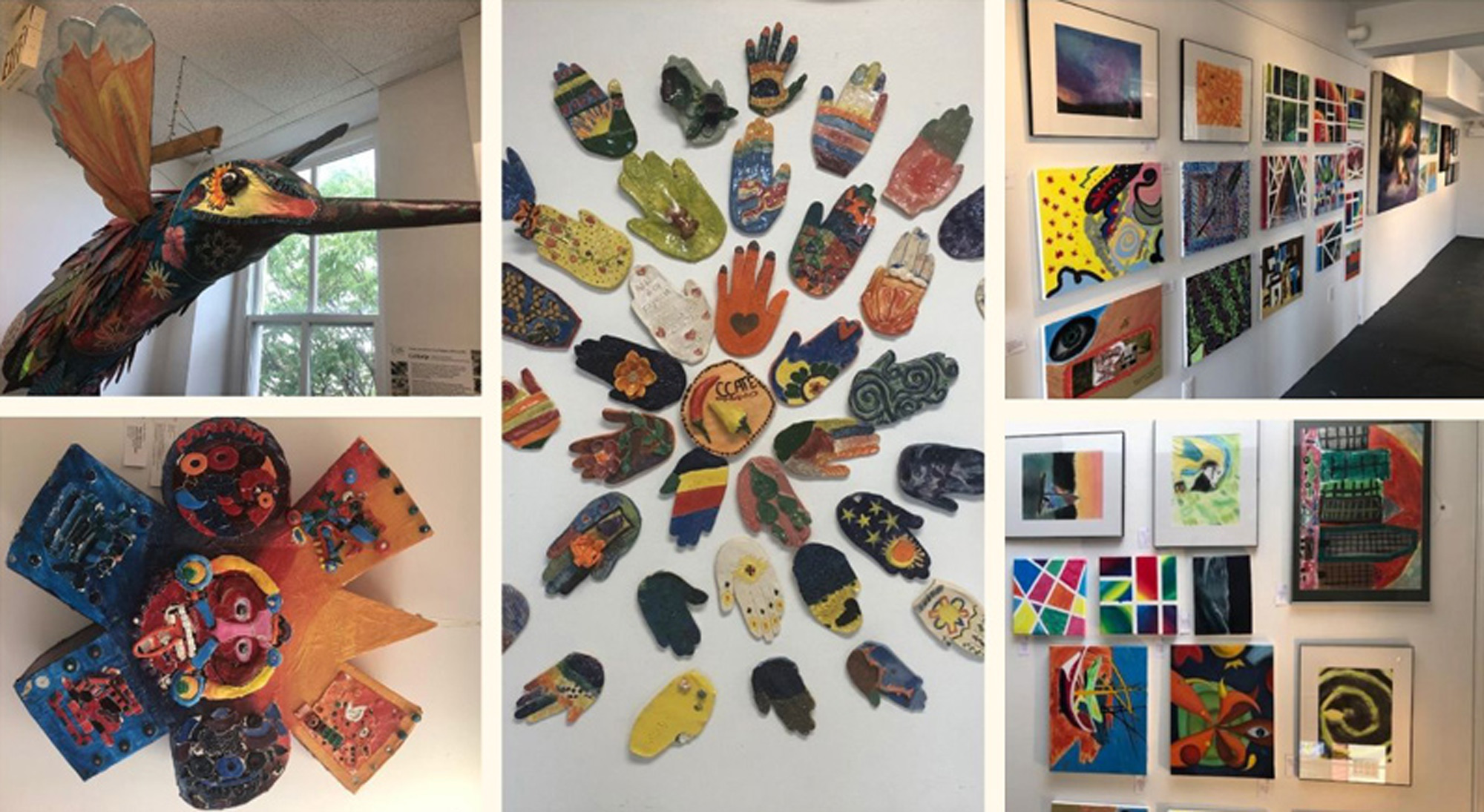The Difficult Art of Migration
The “El difícil arte de migrar” exhibit brings a new narrative about migration to academia.
This past fall and winter, Latin American and Latino Studies (LALS) hosted the “El difícil arte de migrar” (“The Difficult Art of Migration”) exhibit at the Annenberg Center for The Performing Arts. The exhibit used art and photography to document the joys, struggles, and triumphs of the Latinx immigrant community of Norristown, Pennsylvania.
Supported and funded by LALS, The Sachs Program for Arts Innovation, The Center for Experimental Ethnography, University of Pennsylvania Campaign for the Community, the Departments of History of Art and Romance Languages, and Penn Arts & Sciences, the installation contained over 75 pieces, including pastels, acrylics, photography in black and white, digital photographs, ceramics, and short films.
The pieces, which included works from children and elders—and every age in between—were created by 45 members of The Centro de Cultura, Arte, Trabajo y Educación (CCATE) organization, an award-winning arts and education non-profit based in Norristown that is comprised of close to 300 Latinx families.
The collection encompassed what CCATE’s founder and director and exhibit co-curator Obed Arango refers to as “la villa inmigrante” (the immigrant village). He says that together, the many pieces create a special narrative: “We are not criminals. We are seeds, and we are life. We are the fertile ground that sustains and supports new generations. We are dialogue, we are ideas and plans. We are action. We are a community with a thousand talents that comes together to cultivate brotherly and sisterly consciousness, and to work towards social, economic and environmental justice. We are love, and we are art!”
"The exhibit expressed the participants' experiences, dreams, daily life, joy, and pain,” says Arango. “I was able to talk with the authors and many artists about their selections. The work of the curator is easy when the process has been mediated by constant dialogue that informs the many decisions and the many narratives, and that was the case of this wonderful exhibition."
The opening night reception featured Emilio Parrado, Dorothy Swaine Thomas Professor of Sociology and the LALS interim Director, who spoke about the issues surrounding immigration, what it means to be a migrant, and how the artwork was a powerful means of speaking to these themes.
“The colorful, elaborate, and forward-looking combination of paintings and sculptures representing immigrants’ daily life dramatically contrasts with the fearful and negative representations of migration so common in public discussions today.”
“Through the exhibit, CCATE brought a new narrative about migration to academia, a narrative constructed and produced by Latino immigrants themselves and impactfully expressed through the arts,” says Parrado, who also holds an appointment at Penn’s Population Studies Center. “The colorful, elaborate, and forward-looking combination of paintings and sculptures representing immigrants’ daily life dramatically contrasts with the fearful and negative representations of migration so common in public discussions today. It was an inspiring exhibit that illuminated how much culture and knowledge migrants are bringing to the U.S.”
In addition to the exhibit, programming throughout the fall semester linked to the exhibit's central themes of migration, creation of a counter-space and counter-narratives by the immigrant community, and how the immigrant village has explored issues around identity, representation, and social transformation.
"Art is meant and experienced differently for each person, and this is what I felt when I visited the Penn Annenberg Centre’s CCATE exhibit," says Kavya Singh, an Australian exchange student studying in the Penn Model Organization of American States program. "I walked away knowing that in the struggle to be free, it requires courage—something that we can learn very well from Latin Americans. Their art is strong, and it is welcoming to everybody. It screamed beautifully in whispers, ‘I am here. You are not alone."



